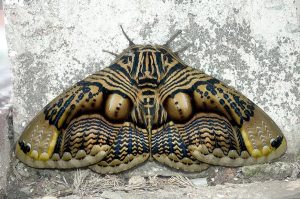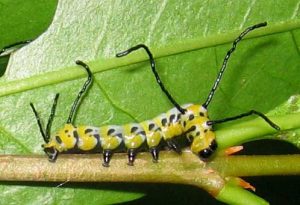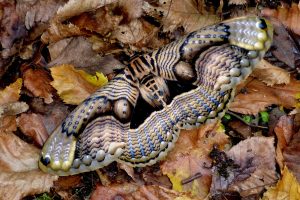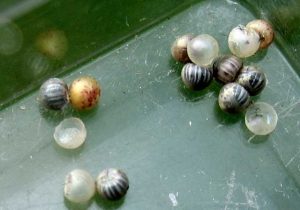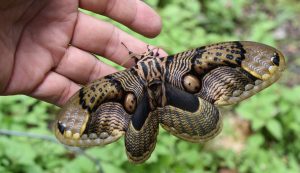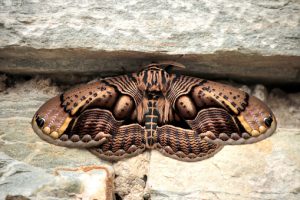Owl Moth (Brahmaea wallichii)
Owl moth of the Brahmin moth family is one of the largest moth species with a large wingspan, indigenous to different parts of Asia. They mimic the owl when it comes to their feathers and eyes, hence the name.
im7.ezgif.com
Scientific Classification
- Family: Brahmaeidae
- Genus: Brahmaea
- Scientific Name: Brahmaea wallichii
Description and Identification
Pupa
There is no record about this species pupal stage.
Adult Moth
Sexual Dimorphism: Not prominent
Color and Appearance
Forewings: When opened, they have black and brown stripes with prominent eyespots visible on each side. When closed, there is not much change in pattern, though only one eyespot is seen.
Hindwings: When opened, it is marked with light brown margins and triangular-shaped white spots. When closed, the color and markings mostly remain the same.
Average Wingspan: 9 – 16 cm
Flight Pattern: Not recorded
Season: Not recorded
Quick Facts
| Distribution | India, Bhutan, Nepal, Japan, Taiwan, China, Myanmar |
| Habitat | Temperate and tropical forests |
| Predators | Ferrets, weasels, birds, polecats |
| Lifespan of Adults | Not recorded |
| Host Plants | Ash, common lilac, elderberry |
| Adult Diet | Mostly nectar of their host plants |
Did You Know
- Their species name is in honor of Nathaniel Wallich, the famous Danish botanist.
- The owl moth has three subspecies, namely Brahmaea wallichii wallichii, Brahmaea wallichii insulata, and Brahmaea wallichii saifulica.
- Like the owl, these moths are nocturnal too, spending the day spreading their wings and resting on trunks. If disturbed or stressed, they express their agony by shaking but don’t fly away.
Scientific Classification
- Family: Brahmaeidae
- Genus: Brahmaea
- Scientific Name: Brahmaea wallichii

